#C. maculata
Explore tagged Tumblr posts
Text
#7 - Pink Spotted Lady Beetle
Coleomegilla maculata
Stylized, without pink or spots
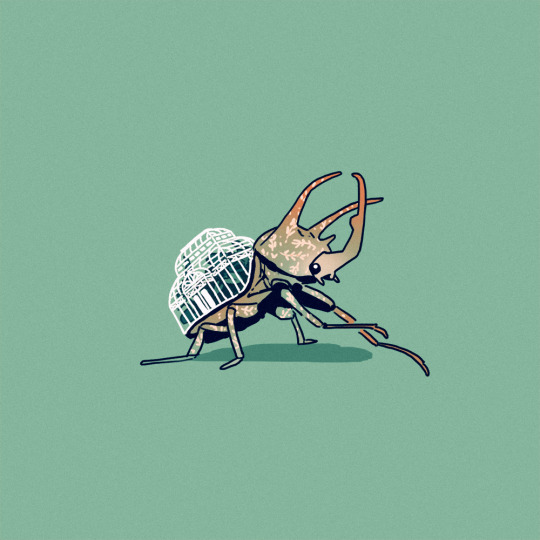



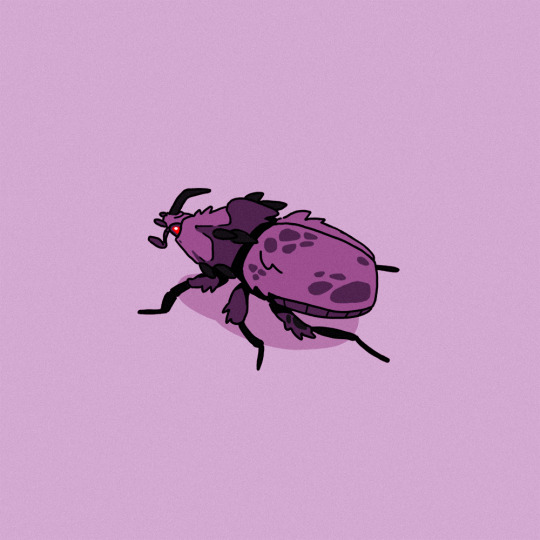
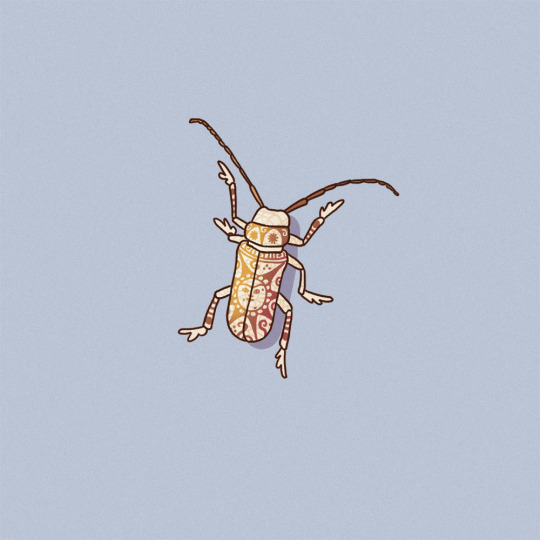
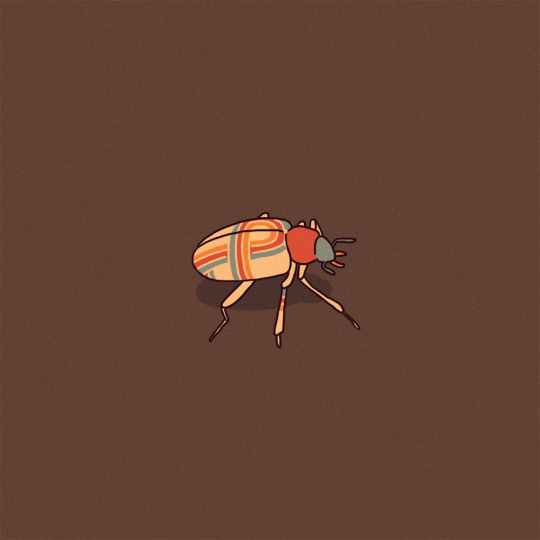

bug parade continues apace! (additional beetles here)
ATLAS x CONSERVATORY | LEAF WEEVIL x CLOISONNE BESSBUG x HAWAIIAN SHIRT | BLADDER-BODIED MELOID x ONION DOME COCONUT RHINO x DARIGAN PAINT BRUSH | RED MILKWEED x LUSTREWARE PINK SPOTTED LADY x RETRO STRIPES | EMERALD EUPHORIA x VAPORWAVE
4K notes
·
View notes
Text

The Spotted-winged fruit bat (Balionycteris maculata) is the smallest fruit bat species in the world. It typically roosts in the crowns of tall palms and epiphytic vegetation, but has also been known to excavate roost cavities in termite nests. Sarawak, Malaysia (Borneo). Photo by Chien C. Lee.
167 notes
·
View notes
Text

A plant I had been hoping to see for years! This is a striped orchid, Corallorhiza striata. There are a few Corallorhiza species where we go hiking in Washington State, but this one is one of the less common to see. You're more likely to spot C. maculata or C. mertensiana, called spotted and Pacific coralroots, respectively. I found this one on the Olympic Peninsula while backpacking up the Elwha.

Corallorhiza orchids, the coralroots, are mycoheterotrophic, meaning they parasitize mycorrhizal fungi instead of using photosynthesis like most plants. This means they'll just die if someone tries to cultivate them, which is honestly probably a good thing, given how threatened orchids are by poaching.
#Corallorhiza striata#striped orchid#plants of Washington State#Corallorhiza#coralroots#orchids#if you poach orchids know that I am waiting for you#:)#start running
198 notes
·
View notes
Text
Coleomegilla maculata, pink spotted lady beetle

SHORT CUP OF WATER
NO ICE
NO WATER
BUG
...
The BUG in question is Coleomegilla maculata, the pink spotted lady beetle, and is native to North America.
568 notes
·
View notes
Text










Ebony Jewelwing - Calopteryx maculata
This is one of the most beautiful and eye-catching specimens to behold in Ontario. This specie is easily recognizable thanks to its lustrous green body (which may be more prominent in males and more subdued in females) and broad wings which are all dark or have a smoky look. Actually, if you look closer at the leading (forwardmost) edge of the wings, you may notice that they too are emerald colored! Other North American Calopteryx species may appear similar in terms of form an iridescence, such as the Sparkling Jewelwing (C. dimidiata) and the Superb Jewelwing (C. amata). However, from the images I've seen, all of these Broad-winged Damselflies have some degree of distinctly clear wings. They might have a small patch or section on the wings that are black, but the majority of them are otherwise clear (aside from their veins), much like typical Odonates. Looks like identifying this beautiful summer flier is quite simple then. Look for them perching by water and occasionally fluttering to find a better spot. If you intend to photograph such a beautiful Damselfly, approach them slowly and remain persistent. They're always watching out for things around, friend and prey alike, and they have no plans to walk to a new location, only to fly as their legs aren't suitable for walking. Instead, the legs are better equipped to grasp, land, perch and climb up plants or similar vertically pointing objects.
It's worth noting that the wings of the Ebony Jewelwing actually darken over time after it emerges from the water and fully matures and spend more time perching and flying. If you compare the first 6 pictures to the remaining 4, you can see this for yourself. Individual variation is always a factor, but it's likely the individual from 2022 was relatively "fresher" compared to the one from 2024. While the wings may darken, the white spot on the female's pterostigma - seen in both of these two stunning individuals - will always remain. Since the wings of this summer Damselfly are dark colored in both males and females, I sometimes wonder how significantly their wings contribute to their thermoregulation as they bask in the sun. With their smoky to dark shading and their surface area, the wings are likely powerful absorbers and radiators of heat as the insect perches. Furthermore, looking at the perching positions of these individuals' abdomens in these images while at rest (sometimes between the wings, sometimes not), the abdomen may be shifting to try and minimize prolonged exposure to heat. It's also worth considering that the more metallic/reflective bodies of male Ebony Jewelwings deflect heat differently compared to the darker bodies of the females (although these individuals were quite gleaming). Food for thought, I suppose, and maybe it's something I can look for the next time these insects are spotted fluttering by the neighborhood stream.
Pictures were taken on July 8, 2022 and July 1, 2024 with a Google Pixel 4.
#jonny’s insect catalogue#ontario insect#damselfly#ebony jewelwing#broad winged damselfly#odonata#insect#toronto#july2022#2022#july2024#2024#entomology#nature#arthropods#invertebrates#photography#animals
31 notes
·
View notes
Text
Species Masterpost
A list of the species that have been featured on this blog so far! Work in progress.
A
Adalia - x
Adalia bipunctata - x - 2 spotted
Adalia decempunctata - x - 10 spotted
Anatis - x
Anatis labiculata - x - 15 spotted
Anatis mali - x - eye spotted (american)
Anatis ocellata - x - eyed (european)
Anatis rathvoni - x - flying saucer
Anisosticta
Anisosticta novemdecimpunctata
Aiolocaria
Aiolocaria hexaspilota
Apolinus - x
Apolinus lividigaster - x - yellow shouldered
Azya - x
Azya orbigera - x
B
Brachiacantha - x
Brachiacantha arizonica - x
Brachiacantha ursina - x
Brumoides
Brumoides ohtai
C
Calvia - x
Calvia albida - x
Calvia decemguttata - little arboreal
Calvia muiri
Calvia quatuordecimguttata - cream spotted
Ceratomegilla
Ceratomegilla notata
see also: Hippodamia notata - x
Cheilomenes - x
Cheilomenes bidentata - x
Cheilomenes lunata - x - lunate
Cheilomenes sexmaculata - x - 6 spotted zigzag
Chilocorus
Chilocorus kuwanae - Kuwana's lady beetle
Chilocorus nigritus - Malaysian ladybird beetle
Chilocorus rubidus
Coccinella - common lady beetles - x
Coccinella leonina - orange spotted - x
Coccinella monticola - x - mountain
Coccinella novemnotata - 9 spot - x
Coccinella septempunctata - 7 spot - x
Coccinella transversalis - x - transverse lady
Coccinella trifasciata - x - 3 banded lady
Coccinula - x
Coccinula quatuordecimpustulata - x
Coelophora - x
Coelophora inaequalis - x - seaside
Coleomegilla - x
Coleomegilla maculata - x - pink spotted
Cryptolaemus - x
Cryptolaemus montrouzieri
Curinus - x
Curinus coeruleus - x
Cycloneda - spotless lady beetles - x
Cycloneda emarginata - x
Cycloneda munda - x
Cycloneda polita - x
Cycloneda pulchella - x
Cycloneda sanguinea - spotless lady beetle - x
D
Declivitata - x
Declivitata olivieri - x
E
Epilachnini - x - leaf eating (tribe)
Epilachna - x
Epilachna borealis - x - squash beetle
Epilachna vigintisexpunctata
Exochomus - x
Exochomus quadripustulatus - x - pine ladybird
F
G
H
Halmus - x
Halmus chalybeus - x - steelblue lady beetle
Halyzia
Halyzia sedecimguttata - orange ladybird
Henosepilachna - x
Henosepilachna argus - x
Henosepilachna vigintioctopunctata - x
see also: Epilachnini - x
Harmonia - x
Harmonia axyridis - x
Harmonia conformis - x
Harmonia testudinaria - x
Hippodamia - oblong lady beetles - x
Hippodamia americana - x
Hippodamia apicalis - x
Hippodamia convergens - convergent lady beetle - x
Hippodamia hieroglyphica - x
Hippodamia notata - x
Hippodamia oregonensis - x
Hippodamia parenthesis - x
Hippodamia quinquesignata - 5 spotted lady beetle - x
Hippodamia tredecimpunctata - 13 spotted lady beetle - x
Hippodamia variegata - variegated lady beetle - x
I
Illeis
Illeis galbula
J
K
L
M
Mulsantina - x
Mulsantina picta - x
N
Naemia - x
Naemia seriata - x
Novius - x
Novius bellus
Novius cardinalis - x
Novius circumclusus
Novius fumidus
Novius iceryae
Novius koebelei
Novius virginalis
O
Oenopia - x
Oenopia lyncea - x
P
Papuaepilachna - x
Papuaepilachna guttatopustulata - x
see also: Epilachnini - x
Paranaemia - x
Paranaemia vittigera - x
Propylea
Propylea japonica
Propylea quatuordecimpunctata
Psyllobora - fungus-eating lady beetles - x
Psyllobora borealis - western fairy ladybird - x
Psyllobora lata - x
Psyllobora nigrovittata - x
Psyllobora picta - x
Psyllobora renifer - kidney spotted - x
Psyllobora roei - x
Psyllobora vigintiduopunctata - 22 spot ladybird - x
Psyllobora vigintimaculata - 20 spot ladybird - x
Q
R
S
Scymninae (subfamily)
Scymnini (tribe)
Scymnus - x
T
U
V
W
X
Y
Z
Non ladybugs
All can be found under tag #not a ladybug
Beetles
Coleoptera - x
Chrysomelidae - x
Aspidimorpha miliaris
Leptinotarsa decemlineata
Crioceris duodecimpunctata
Endomychus coccineus
Spiders
Araneae - x
Eresus - x
Eresus sandaliatus
Paraplectana thorntoni
Mammals
Bos taurus
Felis catus
4 notes
·
View notes
Note
Can you tell us all the species of tarantulas/any other invertebrates you've owned? I'm curious as an invertebrate lover myself :D
Sure can!
E. murinus. Her name was Papyrus.
OBT
Hapalopus sp. Colombia, large and small.
T. albopilosus
Cobalt blue
B. smithi
N. chromatus
T. blondi
P. ornata
H. maculata
C. paganus, I think.
G. rosea
Lapis, who was sold to me as a cobalt blue sling and wasn't (avoid Backwater Reptiles at all costs), and I have no idea what she actually is.
I've also owned a couple of scorpions, vinegaroons, amblypigids, and a giant Vietnamese scorpion!
6 notes
·
View notes
Text
Coleomegilla maculata
Pink spotted lady beetle
ID by @bug-lovers-island in comments







A colony of lady beetles, unsure of exactly the type but they were super interesting to find!
Tuesday February 11th 2025 10:28-10:30am
79 notes
·
View notes
Text
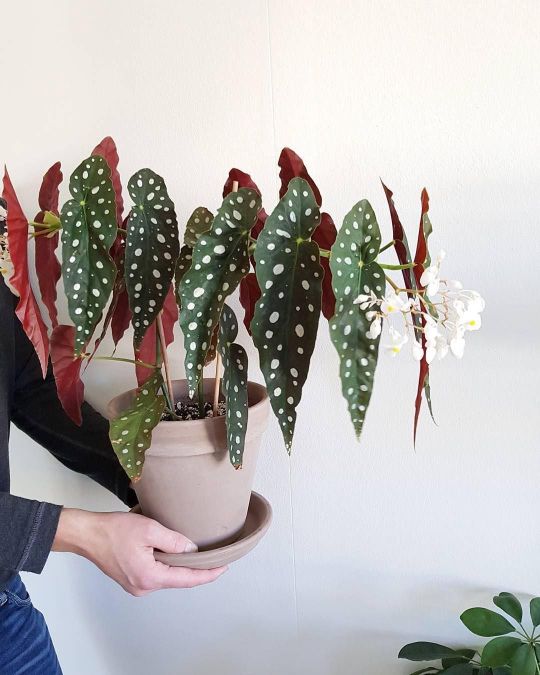
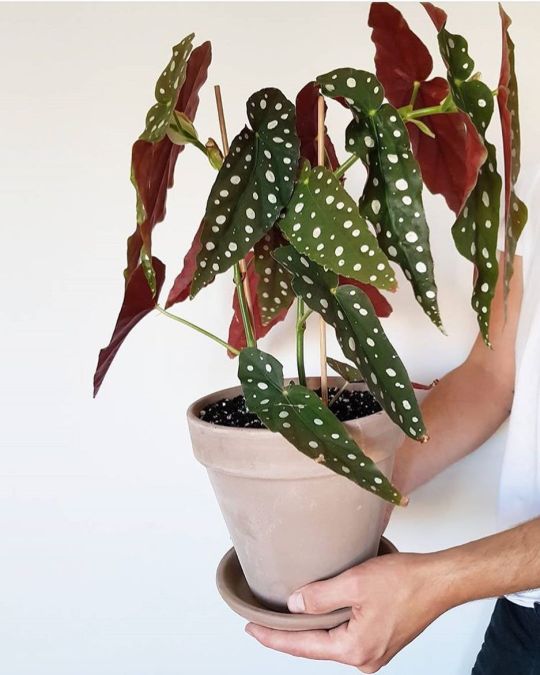
A HOUSE PLANT FOR THE HARDCORE HOUSE PLANT ENTHUSIAST.
PIC(S) INFO: Spotlight on the Spotted Begonia maculata "Wightii" house plant.
Resolution at 1080x1350 & 937x1171.
Why will I love it?
"The striking leaves are asymmetrical, shaped like angel wings, and olive-green in colour with silver, splatter-like dots and a dark-red underside for added drama. It is one for the more experienced plant parent as it can be a headache to look after."
Light or shade?
"Bright and indirect: lots of this promotes flowering and growth, but it shouldn’t be in strong direct sun."
Where shall I put it?
"A warm kitchen or bathroom is perfect. An east- or west-facing windowsill that gets morning or evening light works well; move it to a southern windowsill for winter. I have one by a frosted west-facing windowsill and it is so happy – it has bloomed."
How do I keep it alive?
"Keep the soil well aerated and generally moist; allow only the top 1cm to dry out. They are very fussy about humidity, so need daily misting or a humidifier, and keep temperatures high (18C-30C)."
Did you know?
"The begonia is named after French plant collector Michel Bégon (1638–1710), who was governor of Santo Domingo (the Dominican Republic), where the plant was “discovered” in the 1600s."
-- THE GUARDIAN, "Houseplant of the week: Begonia maculata "Wightii,"" by Gynelle Leon, c. October 2021
[In our new column, the founder of cult plant shop Prick chooses a dramatic but demanding beauty. Probably not one for newbies.]
Source: www.pinterest.com/pin/287386019959160733 (both found on Pinterest).
#PottedPlants#HousePlant#HousePlants#Décor#HomeDécor#Tifamade#Plants#BegoniaMaculataWightii#IndoorPlants#Begonia#SpottedBegoniaMaculataWightii#BegoniaMaculata#Wightii#IndoorPlant#SpottedBegoniaMaculata#Photography#LargeIndoorPlants#PlantPhotography#Angel-WingedBegonia#RainforestPlants#PolkaDotBegonia#PolkaDotPlant#Plant#Flowers#SpottedBegonia#Plantcore
0 notes
Text
unrelated but kamakichi kishinoye is one of my jellyfish blorbo dudes, he's right up there with Jarms and Lisa-Ann Gershwin and Da Silveira
#idk if i spelled da silveira correctly but he's one of the people who discovered the ''nausithoe aurea'' (now nausithoe maculata.. eugh)#and while he isn't on as many jellyfish publications as the other three I have read the two nausithoe publications more times than I can c-#-count#mun rambles#jellyfish
1 note
·
View note
Text
This is Irminia, the first Tarantula I bought, not knowing how addicting this hobby's gonna be lol. I got her, when she had about the size of a fingernail and now, after almost 5 years, she fits onto my whole hand <3 But that also means, that she has- if everything goes well- only about 5 to 7 years left with me. Makes me already sad to know, that I can't keep this little beast forever. She's the only tarantula, that seems overly smart to me. Might be, cuz she's special to me anyway, but whenever I call her by her name, she comes out of her hide c: (I know that they only react to vibrations, but she literally only comes out when I say 'Irminia'. No other word works lol) Doesn't she look absolutely stunning? Before I informed myself a little more about tarantulas, I never knew how many stunning looking species are out there. Typically they only show the standard ones like Hamorii's, Boehmei's or Geniculata's. But never Metallica's, Irminia's or Maculata's, just to call a few examples. Tarantulas exist in all colors you can imagine; brown, white, pink, purple, black, green, orange, blue, yellow,... really anything. And they're super easy to take care of. An enclosure with some ventilation, substrate, water, all two weeks something to eat and enough warmth. Basically like an exotic houseplant, just more interesting c:

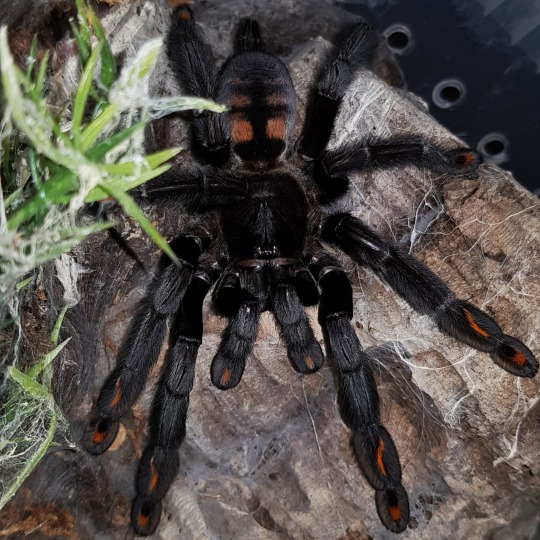
34 notes
·
View notes
Text
Propylea quatuordecimpunctata, fourteen-spotted lady beetle
Anatis labiculata, fifteen-spotted lady beetle
Coleomegilla maculata, pink spotted lady beetle or twelve-spotted lady beetle
Last one may be Halmus chalybeus, steelblue lady beetle (which is also subfamily Chilocorinae)
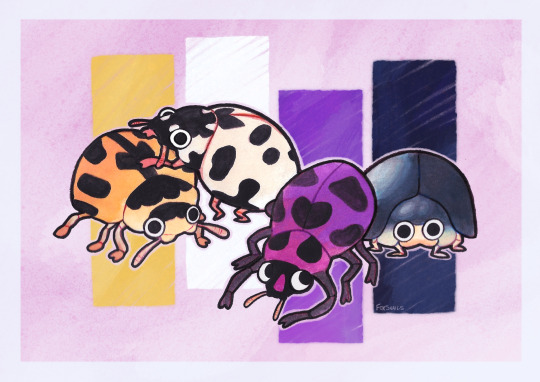
Non-binary flag made from ladybugs! (And one lady beetle)
Watercolour, gouache and Procreate
Commission Info
#art#stylized#not my id#Propylea#P. quatuordecimpunctata#Anatis#A. labiculata#Coleomegilla#C. maculata#Chilocorus#Halmus#H. chalybeus#foxsnails
878 notes
·
View notes
Text

June 18, 2022
My lovely cousin dropped by earlier and gifted me a polka dot begonia (Begonia Maculata) clipping from her jungle because “the leaves look like dragon wings”. I love my family.
In true book dragon fashion, I named her Cimorene after the main character in Dealing with Dragons by Patricia C. Wrede.
#godzilla reads#dealing with dragons#patricia c. wrede#booklr#book blog#book blurb#plants#houseplants#plantblr#polka dot begonia
13 notes
·
View notes
Text
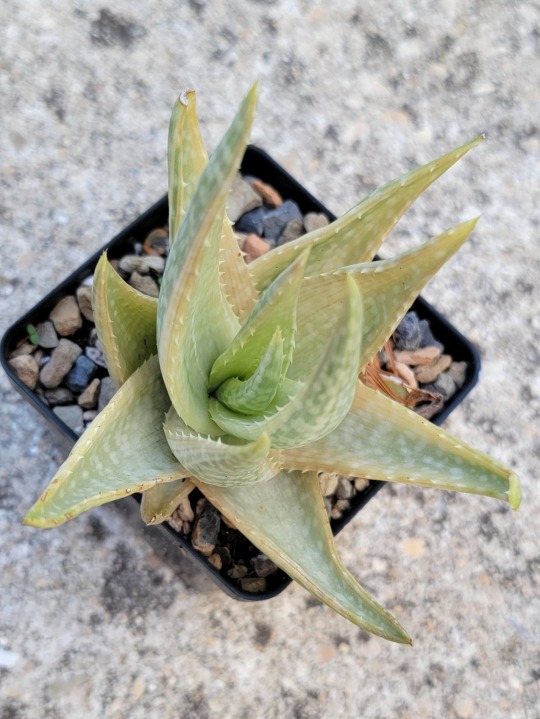
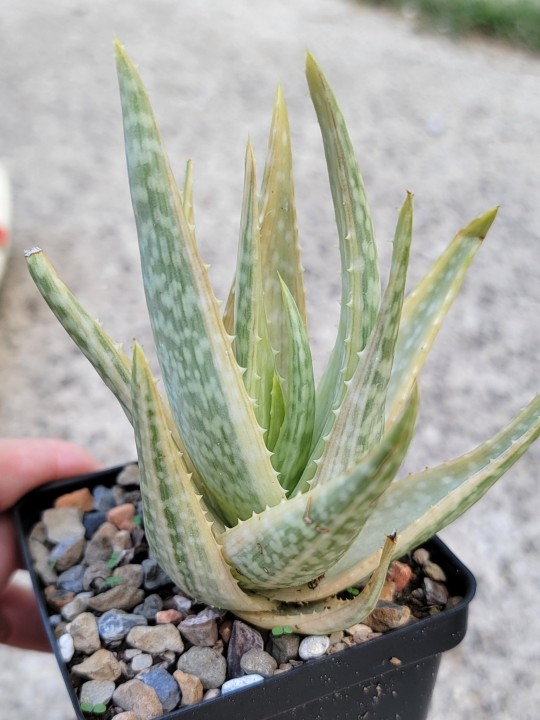
This is what I understand to be a variegated form of Aloe 'Ghost', which is a hybrid of Aloe striata and Aloe maculata. A. striata imparts a pale glaucous look, which variegation further exaggerates. You can see the top of the leaf looks almost pure white. (In fact, it was so pale and hopeless-looking when I bought it that they gave me a discount, lol.)
A. maculata is a tolerant and vigorous species that endures heat and sunlight well, so, despite the fact that variegation usually results in more sensitive plants, this one sailed through the extraordinarily high temperatures we endured for months. It is a bit slow, but nothing like what one would expect from the color.
Both species are relatively cold hardy by aloe standards (~20 to 25°F or -4 to -7°C, though of course that depends on other variables), so I imagine the hybrid is the same. Due to the variegation, however, I wouldn't go below the high end of that range.
7 notes
·
View notes
Photo


“If you feel lost, disappointed, hesitant, or weak, return to yourself, to who you are, here and now and when you get there, you will discover yourself, like a lotus flower in full bloom, even in a muddy pond, beautiful and strong.” ― Masaru Emoto
{moss&mink} Motivational Print A {moss&mink} Layla Lamp {moss&mink} Midas - Palm w/Books {moss&mink} Love Wooden Letters {moss&mink} Midas - Diffuser {moss&mink} Layla Desk {moss&mink} Dahlia Vase {moss&mink} Midas - Stone Fruit {moss&mink} Midas - Twist Sculpture {moss&mink} Tarley Curtains (White) {moss&mink} Layla Chair {moss&mink} Midas - Leaf Sculpture {moss&mink} Layla Shelves {moss&mink} Midas - Book Ends {moss&mink} Motivational Print B {moss&mink} Midas - Vine Planter {moss&mink} Motivational Print C
~ Foxwood - Little Collie - sit
~ Apple Fall Sophia Frame, 4:3 - Aged Oak AF Magazine Files Apple Fall FallBook '21 - Pacific Apple Fall Red Wine w/ Glasses Apple Fall Books - Arrangement 14 Apple Fall Carter Lamp - Bronze Apple Fall Begonia Maculata Apple Fall Cut Tulip Arrangement - Creme Apple Fall Books - Arrangement 10
13 notes
·
View notes
Photo


“spotted” Water hemlock
Cicuta maculata
Siebenthaler fen complex has interesting variability in this species. Usually the umbels are much large and the plant is both less branched and larger in general. I almost keyed it out to an Angelica spp. at first due to the amount of variability shown; however, these leaves did not fit A. venosa at all. Cicuta bulbifera is the only species that shows up in this state besides Cicuta maculata and Cicuta maculata has spotting, hence maculata epithet; although C. bulbifera usually has much more linear reduced leaves. With this concept I would say that the more spotted and bipinnately compound C. maculata or C. maculata var. maculata is not our culprit out right and it must be a local var. or a fairly unique ecotype of it.

above is C. bulbifera range map from historic records, It is much more reduced overall in range than C. maculata which is uniform in the east.
7 notes
·
View notes